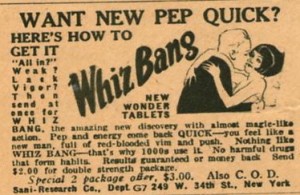ACLU Lawyer Gillian Thomas’s book, Because of Sex, demonstrates that once a law is passed, the work has just begun. Thomas traces fifty years of court cases that interpreted the meaning of sex discrimination as established by Title VII of the 1964 Civil Rights Act. Thomas grips her reader from the start, opening the book with the controversial introduction of “sex” into the Civil Rights Act by Howard Smith (Democratic Representative from Virginia). To this day, scholars debate whether this addition was a sincere attempt to promote gender equality or a sexist joke aimed at derailing the Act. Ultimately, the clause stayed in and the Civil Rights Act passed prohibiting discrimination because of race, color, religion, national origin, and sex. However, as Thomas and other scholars have pointed out, because “sex” was a last minute addition to the law, its meaning received little attention from Congress. Therefore, it has been up to the courts to interpret what sex discrimination looks like. This is where Thomas spends the majority of her book.
Thomas argues that Title VII has led to “revolutionary” legal and cultural change and consequently “transforming what it means to be a woman who works” (p. 229). Each chapter of Because of Sex tackles one court case that made its way to the Supreme Court and set precedent for the interpretation of sex discrimination in employment. This case study approach allows Thomas to introduce her readers to all the players involved in each of these cases, giving background and historical contextual information that brings each case to life. For example, I’m very familiar with Price Waterhouse v. Hopkins, wherein sex stereotyping was ruled sex discrimination after Ann Hopkins was denied partnership for her management style and told to go to charm school. What I didn’t know was that after winning her case, Hopkins was offered $1 million to NOT return to work at Price Waterhouse. Hopkins turned them down and rejoined the firm after fighting them in the courts for nearly a decade. According to Thomas, Hopkins became a fierce advocate for diversity in the firm, which explains in part why now you can see Price Waterhouse on top lists of workplaces promoting diversity. What really hit home for me was how long these landmark cases take and how life moves on for the plaintiffs in the meantime. Their names may go down in legal precedent and/or history books for changing the direction of sex discrimination law, but in the meantime, they have to pay the bills. And as someone suing for employment discrimination, that isn’t always easy.
This is a book that fellow wonkettes may pick up for a quick and informative read. It may not be a book for academics looking to cite new research. Thomas does not situate her book within a larger literature, her argument lacks a theoretical or empirical contribution, and her methodology of choosing which cases to analyze is unclear. However, Thomas writes with a narrative style that makes reading legal cases accessible and enjoyable. Let’s face it – reading about the law can be quite dry and boring even to those of us who are sincerely invested in its nuances, idiosyncrasies, and possibilities. Thomas uses her legal expertise and experience to translate the law for everyday readers. I especially appreciated how she threw in important procedural details to those of us who do not practice law. For example, she shows how a case moves from a district court, to an appeals court, and, if their petition is accepted, to the Supreme Court. Once at the Supreme Court, Thomas explains that there is no trial. Instead, each side’s lawyer has thirty minutes to present their argument and it is expected for the justices to jump in immediately and ask questions. Therefore, lawyers typically practice their argument through moot courts or assemblies of their peers, anticipating the questions justices may ask.
Because of Sex would also be a great supplementary text in college courses. For instance, I can imagine assigning sections of it in a Gender and Work course to help my students understand the various forms of sex discrimination. In my experience, the only form of sex discrimination college students know about is wage inequality. The case studies in Thomas’s book provide clear illustrations that sex discrimination can also involve denying employment to mothers, height and weight restrictions, discriminatory pension plans and leave policies, sexual harassment, and sex stereotyping in promotion decisions. Thomas’s book could also pair well with legal mobilization literature, providing tangible examples of how people consider their legal rights, the various actors involved in advocacy, and how legal cases connection to larger social movements.
Because of Sex by Gillian Thomas is a good introductory text for folks looking to explore how courts have interpreted sex discrimination since its introduction to the Civil Rights Act.










